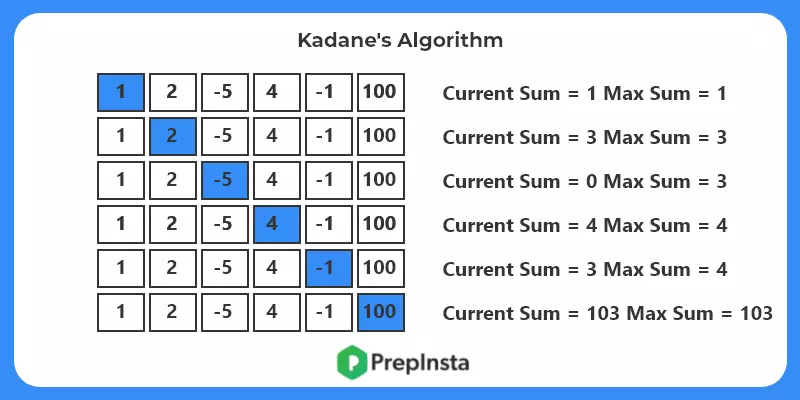Largest Sum Contiguous Subarray
Largest Sum Contiguous Subarray
In the Largest Sum Contiguous Subarray problem we have to find the subarray with maximum sum. It is a very famous problem which is asked in many interviews. In this article, we will provide a C++ solution with an explanation.

Largest Sum Contiguous Subarray Problem Description
We are given an array with n integers. Output the maximum possible subarray sum.
Input
- First line contains single integer n the size of subarray.
- Second line contains n integers – the elements of subarray.
Output
- The required sum.
Largest Sum Contiguous Subarray Solution
Basic Approach –
The basic or naive approach is to use a nested loop and find sum for all sub arrays generated.
Time Complexity – O(n^2)
Space Complexity – O(n)
Optimized Approach
The optimized approach uses Kadane’s Algorithm. The idea of kadane’s algorithm is simple. We maintain two sums –
- Current Sum – Csum
- Max Sum – MxSum
We iterate over the array adding current element to the current sum. If at any point the current sum becomes negative we set it to zero.
Time Complexity – O(n)
Space Complexity – O(n)

Code
Output
6
1 2 -5 4 -1 100
103



Login/Signup to comment